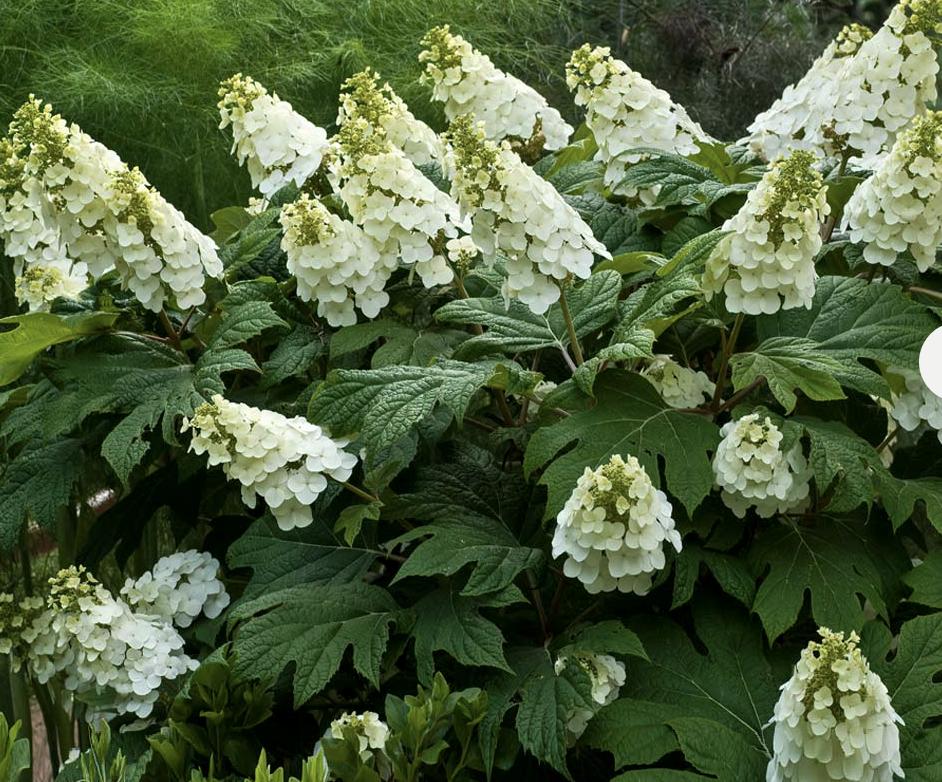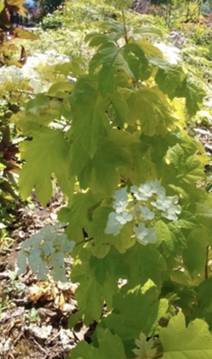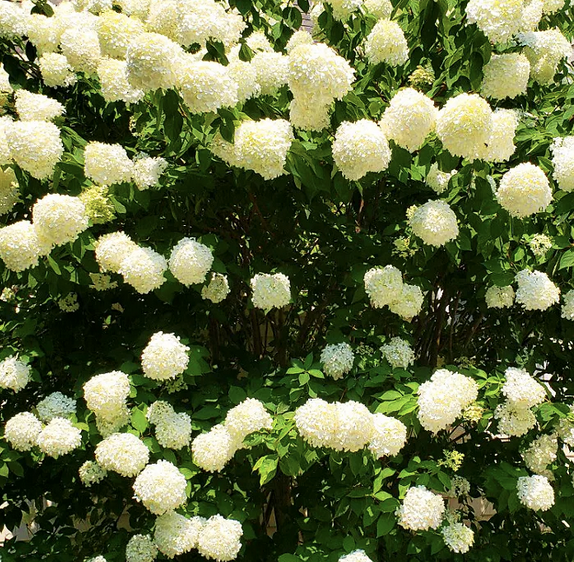|
By Matt S., County Extension Director and Horticulture Agent, Pitt County Hydrangeas are one of the most popular southern landscape plants, and with good reason. Their large colorful flower heads are impossible to ignore, and the subtle changes in color at different stages in their long bloom period are a trait that very few plants offer. When most gardeners think of hydrangeas, it is the mophead type, Hydrangea macrophylla, that generally comes to mind. While the mopheads are excellent plants, my favorite has always been the Oakleaf hydrangea, a southeastern U.S. native.
Of course, it wouldn’t be a hydrangea without a large, impactful bloom. Oakleaf Hydrangeas generally start blooming in late May or early June. Flowers are white and the individual blossoms form large panicles that are more conical than rounded. Flower clusters can reach as long as 12 inches and are 3 to 4 inches wide. Petals will gradually fade to a rosy pink color during the summer, before finishing almost tan in fall. Their flowers may have a light fragrance, though it is not overwhelming. Many gardeners like to use the flowers for drying, as they hold up well after cutting. To me though, what really sets the Oakleaf Hydrangea apart from its relatives is the amazing fall color it generates in October and November. As temperatures cool and days shorten, the leaves change from their usual dark green to an almost purplish-red. In the early stages of this change, the veins on each leaf will often stay green for several days after the rest of the leaf has turned color, which makes a unique sort of variegated look not typically seen among plants in fall. In many landscapes, Oakleaf Hydrangea is the most eye-catching plant during late fall. Oakleaf Hydrangea is a native plant that performs fantastically in our area. Unlike Hydrangea macrophylla, which is typically one of the first plants to droop during periods of dry weather, Oakleaf Hydrangeas are tolerant of a wide range of climate and soil conditions and free of any major insect and disease pests. Nurseries and plant propagators will report that Oakleaf Hydrangea can be a bit difficult to get started, but once it makes it into the ground at your home, it will almost certainly be problem free.
Most Oakleaf Hydrangea will grow to about 6-8 feet high and wide, though there are cultivars that are smaller. ‘Pee Wee’ is a popular dwarf cultivar, and ‘Little Honey’ is a semi-dwarf type with golden yellow foliage during the summer. Matthew Stevens is the County Extension Director and Horticulture Agent for North Carolina Cooperative Extension’s Pitt County Center. If you have questions about this article or gardening in general, please contact the Pitt County Extension Master Gardener Infoline at 252-902-1705.
0 Comments
Leave a Reply. |
Matt Stevens
Pitt County Extension Director & Horticulture Agent Archives
July 2024
Categories |



 RSS Feed
RSS Feed